Purple Dream
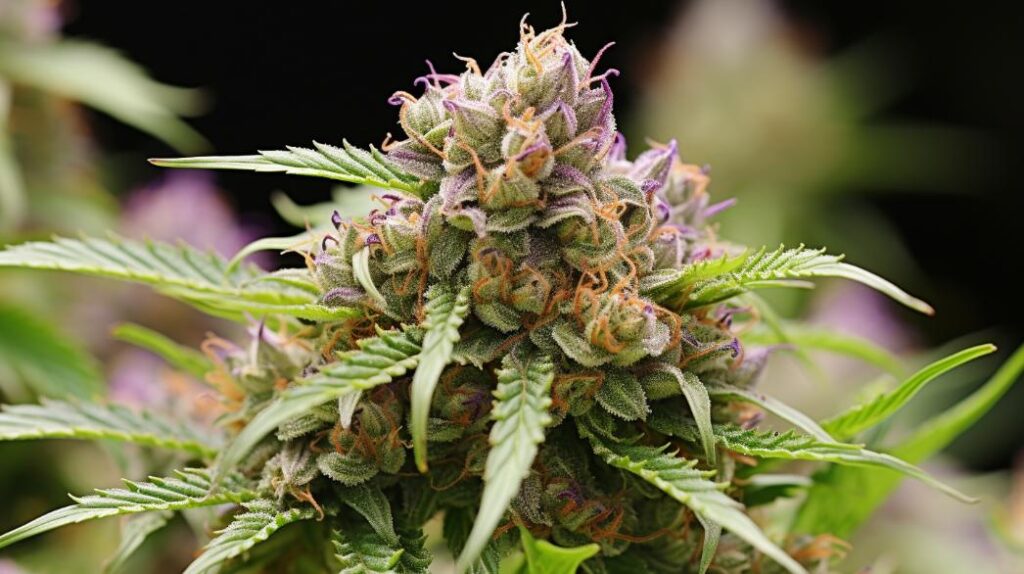
The Purple Dream strain, a hybrid of Granddaddy Purple and Blue Dream, presents an intriguing subject for discussion within the cannabis community. This balanced blend, characterized by its evenly split Sativa and Indica genetics, offers users a multifaceted experience that merges relaxation with a touch of creativity. With THC content that can reach nearly 24%, it becomes essential to explore not only the strain’s recreational appeal but also its potential therapeutic benefits and side effects. What remains less discussed, however, is how such a strain compares to its parent strains regarding efficacy and user satisfaction, a topic ripe for exploration.
Key Takeaways
- Purple Dream is a hybrid strain with 50% Sativa and 50% Indica, from Granddaddy Purple and Blue Dream.
- It contains 15% to 20% THC, promoting relaxation, happiness, and creativity.
- Dominant terpenes include myrcene, caryophyllene, and pinene, enhancing its aromatic and therapeutic properties.
- Suitable for treating medical issues like nausea, chronic pain, and anxiety.
- Adaptable to various cultivation environments and has a flowering period of 7 to 8 weeks.
Genetic Lineage
The Purple Dream strain is a meticulously crafted hybrid, resulting from the crossbreeding of Granddaddy Purple and Blue Dream, exhibiting a balanced 50% Sativa and 50% Indica composition. This genetic fusion harnesses the robust characteristics of Granddaddy Purple, renowned for its deep, calming effects and berry aroma, with the uplifting, cerebral qualities of Blue Dream, creating a versatile and appealing hybrid suitable for various cultivation environments and therapeutic applications.
Cultivators of Purple Dream capitalize on its heritage, noting that the plant exhibits vigorous growth patterns typical of both Sativa and Indica strains. The strain’s structure tends to be more Indica-dominant with dense, compact buds that are richly adorned with trichomes, indicative of the Granddaddy Purple influence. However, its Sativa genetics contribute to a slightly stretched internodal spacing, allowing for better light penetration and air circulation, important for reducing the risk of mold and pests in denser foliage.
The adept combination of these genetic traits makes Purple Dream a favorable option for growers looking for a strain that not only balances mind and body effects but also offers resilience and adaptability in the cultivation process. The strain thrives in both indoor and outdoor settings, showing a particular affinity for temperate to mild climates, typical of its parentage lineage.
THC/CBD Content
Purple Dream strain typically exhibits a THC content ranging between 15% and 20%, with certain phenotypes reaching up to 23.98%. This range places Purple Dream in the category of moderately potent strains, suitable for users seeking a balance between efficacy and manageability. Despite its relatively balanced THC level, variations in cultivation practices and environmental factors can push the upper limits of its psychoactive potential.
The strain’s CBD content is not explicitly documented, which suggests that it is not a primary focus in the cultivation and breeding of Purple Dream. This is common in strains where the emphasis is on achieving a specific THC to CBD ratio primarily geared towards recreational use rather than therapeutic.
Key cultivation-related aspects influencing THC content in Purple Dream include:
- Genetic Selection: Cultivators might choose specific mother plants that are known to produce higher THC levels.
- Growing Conditions: Optimal light, humidity, and nutrients can affect the cannabinoid profiles.
- Harvesting Time: Harvesting later in the flowering stage can result in higher THC levels as the cannabinoids have more time to develop.
Understanding these factors is essential for both cultivators and consumers to predict and influence the effects of the Purple Dream strain.
Terpene Profile
Within the terpene profile of Purple Dream strain, the dominant terpenes such as myrcene, caryophyllene, and pinene play essential roles in defining its aromatic and therapeutic attributes. Each terpene contributes uniquely to the overall experience of the Dream strain, influencing not only the sensory aspects but also potential therapeutic benefits.
Myrcene, often noted for its earthy and musky notes, is prevalent in the Purple Dream strain. It is reputed for its relaxing properties, which could be beneficial for users seeking a calming effect. Caryophyllene, on the other hand, brings a spicy and peppery aroma to the strain. Its potential anti-inflammatory and pain-relieving properties align well with the needs of users looking for physical relief. Lastly, pinene adds a invigorating touch of pine, which complements the overall bouquet and may offer uplifting effects.
To provide a clearer view, here is a breakdown of the key terpenes in the Purple Dream strain:
| Terpene | Aroma | Potential Benefits |
|---|---|---|
| Myrcene | Earthy, musky | Relaxing, sedative |
| Caryophyllene | Spicy, peppery | Anti-inflammatory, pain relief |
| Pinene | Pine | Uplifting, alertness |
Understanding these profiles can assist cultivators and users in predicting the Dream strain’s impact and aromatic appeal.
Effects
Offering a balanced hybrid effect, Purple Dream induces relaxation, happiness, and a burst of creativity in its users. Originating from a cross between Granddaddy Purple and Blue Dream, this strain leverages the robust genetic profiles of its parent strains, resulting in a versatile and enjoyable experience. The moderate THC levels, typically between 15% and 20%, contribute to its broad appeal, ensuring that the effects are pronounced without being overwhelming.
- Moderate THC Content: Typically ranging from 15% to 20%, this level contributes to a balanced and manageable high, making it suitable for both new and experienced users.
- Genetic Lineage: As a cross between Granddaddy Purple and Blue Dream, Purple Dream inherits qualities that stimulate the mind while soothing the body, reflecting the best characteristics of both indica and sativa types.
- Sensory Experience: Users often report a unique interplay of calming and uplifting effects, which can enhance alertness and arousal, adding a dynamic aspect to the strain’s impact.
This carefully crafted combination of effects makes Purple Dream particularly notable in the cannabis community, offering a multifaceted experience that promotes both mental and physical well-being.
Medical Uses
Beyond recreational enjoyment, the Purple Dream strain plays a significant role in therapeutic contexts, particularly in alleviating symptoms associated with various medical conditions. Originating from a meticulous crossbreed between Granddaddy Purple and Blue Dream, Purple Dream inherits potent medicinal properties, particularly effective in managing nausea, chronic pain, and anxiety. Given its lineage, where Purple Kush contributes to its genetic backbone, this strain embodies a balanced therapeutic profile suitable for addressing a wide array of symptoms.
With THC levels oscillating between 12% and 15%, Purple Dream is accessible for patients seeking moderate psychoactive effects combined with substantial therapeutic benefits. This makes it an ideal choice for those managing ADHD, chronic fatigue, and recurrent headaches, providing a calming yet euphoric relief conducive to both mental and physical relaxation. Additionally, its cultivation attributes—characterized by a 7 to 8-week flowering cycle and the emanation of aromatic compounds—make it a viable option for therapeutic gardens aimed at producing bespoke cannabinoid profiles.
Moreover, the strain has shown effectiveness in addressing women’s health issues, offering a nuanced approach to symptom management. The cultivation of Purple Dream, with its balanced hybrid nature, ensures a steady production of phytochemicals essential for medical use, highlighting its dual utility in both personal and clinical settings.
Flavor and Aroma
Characterized by its enchanting sensory profile, the Purple Dream strain emits a delightful aroma with sweet, fruity undertones of berries and grapes, complemented by earthy notes. This strain is not only pleasing to the olfactory senses but also offers a sophisticated flavor palette that enhances the overall consumption experience. The taste of Purple Dream is primarily recognized for its fruity and herbal nuances, creating a complex profile that is both invigorating and deeply satisfying.
-
Berry and Grape Overtones: The predominant flavors of berries and grapes provide a sweet, tangy experience that is typically associated with Purple Dream. These elements are essential in defining the strain’s appealing taste.
-
Herbal and Earthy Background: Accompanying the fruity overtones are subtle hints of earthiness and herbal notes, adding depth and richness to the flavor. This combination ensures a balanced and harmonious palate.
-
Cultivation Influence: The specific cultivation practices, such as soil composition and climate, greatly impact the aromatic and flavor profiles of Purple Dream, enhancing its unique characteristics.
These factors collectively contribute to the high desirability of Purple Dream within the cannabis community, making it a popular choice for both novice and experienced consumers seeking a distinctive and enjoyable flavor experience.
Appearance
The Purple Dream strain exhibits visually striking buds characterized by a vibrant green base interspersed with distinct purple accents, derived from its Granddaddy Purple and Blue Dream lineage. These buds are not only dense but also coated with a thick layer of white trichomes, giving them a frosty appearance that enhances their visual appeal. This juxtaposition of bright green and purple hues reflects a careful cultivation process, designed to maximize both color and resin production.
The visual appeal of Purple Dream is highly rated among connoisseurs, typically scoring an average of 4.6 stars. This rating underscores the aesthetic quality of the buds, which are often praised for their compelling color contrast and the glistening trichomes that cover their surface. Such characteristics are important not only for recreational appeal but also for indicating the potential potency and quality of the strain.
Here’s a detailed breakdown of Purple Dream’s appearance:
| Feature | Description |
|---|---|
| Base Color | Vibrant green |
| Accents | Distinct purple |
| Lineage Influence | Granddaddy Purple, Blue Dream |
| Bud Density | Dense |
| Trichome Coverage | Coated with white trichomes for a frosty look |
This table highlights key visual aspects that make Purple Dream a favored choice among cannabis enthusiasts.
Grow Information
While the aesthetic qualities of Purple Dream are impressive, equally important are its cultivation characteristics, which are favorable for both novice and experienced growers. The Purple Dream strain exhibits strong growth patterns and can adapt to a variety of environmental conditions, making it an excellent choice for diverse cultivation setups.
-
Versatility: Purple Dream thrives in most climates, showing resilience and flexibility. Whether grown indoors or outdoors, this strain adjusts well to its environment, simplifying the cultivation process for growers of all skill levels.
-
Growing Cycle: The plants reach maturity relatively quickly, with a flowering period of just 7 to 8 weeks. This accelerated growth cycle allows for efficient production and quicker turnaround times for harvests, which is particularly beneficial for commercial cultivators.
-
Yield Quality: Purple Dream produces tall plants adorned with aesthetically pleasing and fragrantly potent nugs. The buds not only display a visually appealing purple hue but also emit a delightful aroma, enhancing their market appeal and consumer demand.
Adverse Effects
Common adverse effects experienced by users of Purple Dream include dry mouth, dry eyes, and occasional paranoia. These symptoms are not only important but are often highlighted as particularly persistent among consumers of this cannabis strain.
Dry mouth, scientifically referred to as xerostomia, frequently emerges in the context of Purple Dream usage, likely due to its cannabinoid profile influencing the salivary glands’ normal functioning. This effect, although common across many cannabis strains, appears notably pronounced with Purple Dream, suggesting a specific interaction between its specific terpene blend and THC levels.
Dry eyes, another typical issue, are attributed to the strain’s THC content, which is known to decrease tear secretion, leading to discomfort. This symptom can be particularly troublesome for users who are already prone to ocular issues.
Moreover, the occasional paranoia reported may be linked to the psychoactive effects of THC in Purple Dream, which can sometimes amplify anxiety rather than alleviate it. Such effects are particularly important in scenarios of high dosage or in users with a predisposition to anxiety or other psychological discomforts. Understanding these adverse effects is essential for both consumers and cultivators, as it guides better consumption practices and informed cultivation aimed at minimizing discomfort while harnessing the therapeutic potentials of the Purple Dream strain.
Comparisons with Similar Strains
Purple Dream’s balanced hybrid characteristics, derived from its parent strains Granddaddy Purple and Blue Dream, offer a unique comparison point to other similar cannabis varieties regarding both effects and cultivation properties. This strain’s lineage provides it with a distinctive blend that merges the soothing, sedative effects of Granddaddy Purple with the uplifting, euphoric sensations of Blue Dream.
-
THC Levels: Purple Dream typically features a moderate THC content ranging from 15%-20%, which is quite comparable to Blue Dream but slightly lower than some phenotypes of Granddaddy Purple, which can reach upwards of 23%. This makes Purple Dream a suitable option for users looking for balanced effects without overwhelming potency.
-
Cultivation Characteristics: As a hybrid, Purple Dream combines the robust growth traits of Blue Dream with the coloration and denser bud structure of Granddaddy Purple. It generally exhibits a moderate growing difficulty, making it accessible for cultivators with some experience, seeking to balance yield with manageable care requirements.
-
Medical and Recreational Use: Benefiting from the calming properties of Granddaddy and the mood-enhancement from Blue Dream, Purple Dream is particularly noted for its efficacy in managing stress, pain, and anxiety, making it a versatile choice for both medical and recreational users.
Research and Studies
Ongoing research and studies aim to delineate the specific pharmacological properties and therapeutic benefits of the Purple Dream strain. With moderate THC levels ranging from 12% to 15%, this hybrid, a cross between Granddaddy Purple and Blue Dream, presents a unique profile for both recreational and medical use. Researchers are particularly focused on understanding how these THC levels contribute to the strain’s reported effects of relaxation and happiness, making it suitable for social interactions and certain therapeutic applications.
The strain’s balanced nature suggests potential utility in treating conditions such as stress and anxiety, where a gentle but effective intervention is preferable. The ongoing studies aim to establish a detailed profile that includes not just the psychoactive outcomes but also the agronomic traits of Purple Dream, such as its growth patterns, flowering time, and resistance to pests and diseases. These cultivation-focused investigations help in optimizing growing conditions that maintain the integrity of its cannabinoid profile, ensuring consistency in THC levels and other desirable traits in the strain.
These research efforts are important for both consumers and medical practitioners, offering insights that guide usage and cultivation practices tailored to the specific needs and benefits associated with Purple Dream.
History and Origin
Originating from a deliberate crossbreeding of Granddaddy Purple and Blue Dream, the Purple Dream strain combines the distinctive qualities of its parent strains to offer a balanced hybrid favored in both recreational and medicinal contexts. This genetic synthesis harnesses the robust terpene profiles and cannabinoid ratios that contribute to Purple Dream’s versatile applications. Cultivators and users alike appreciate its nuanced effects that straddle the line between relaxation and euphoria, a hallmark of its well-engineered lineage.
The historical crafting of Purple Dream is rooted in a strategic selection of traits from both Granddaddy Purple and Blue Dream:
- Genetic Heritage: Granddaddy Purple contributes its famous deep body relaxation effects, while Blue Dream adds a lifting cerebral euphoria, making Purple Dream a perfect blend for holistic effects.
- Cultivation Appeal: The strain is noted for its relatively moderate growing difficulty. It thrives in both controlled indoor environments and outdoor settings, exhibiting a resilience that makes it accessible to a range of cultivation practices.
- Medicinal Usage: Purple Dream’s balanced profile makes it a popular choice for managing symptoms like pain and stress, reflecting its high therapeutic value in the cannabis community.
Frequently Asked Questions
What Strain Is Purple Dream?
The strain in question, Purple Dream, derives its genetic background from a cross between Granddaddy Purple and Blue Dream, blending their distinctive attributes to offer a balanced hybrid with both calming and euphoric effects.
Is Purple a Sativa or Indica?
The terms ‘purple’ in cannabis generally refer to the color of the strain rather than its Sativa or Indica classification, arising from specific anthocyanin pigments activated under cool cultivation conditions, unrelated to its genetic lineage.
Is Dream an Indica or Sativa?
Dream classification in cannabis typically refers to whether a strain is mainly Indica, Sativa, or a hybrid. Accurate classification depends on genetic analysis and the observed effects on users after consumption.
Is Purple Strain Strong?
The potency of purple strains can vary considerably, influenced by cultivation conditions and genetic lineage, typically ranging from moderate to high levels, which impacts their effectiveness for recreational and medicinal use.

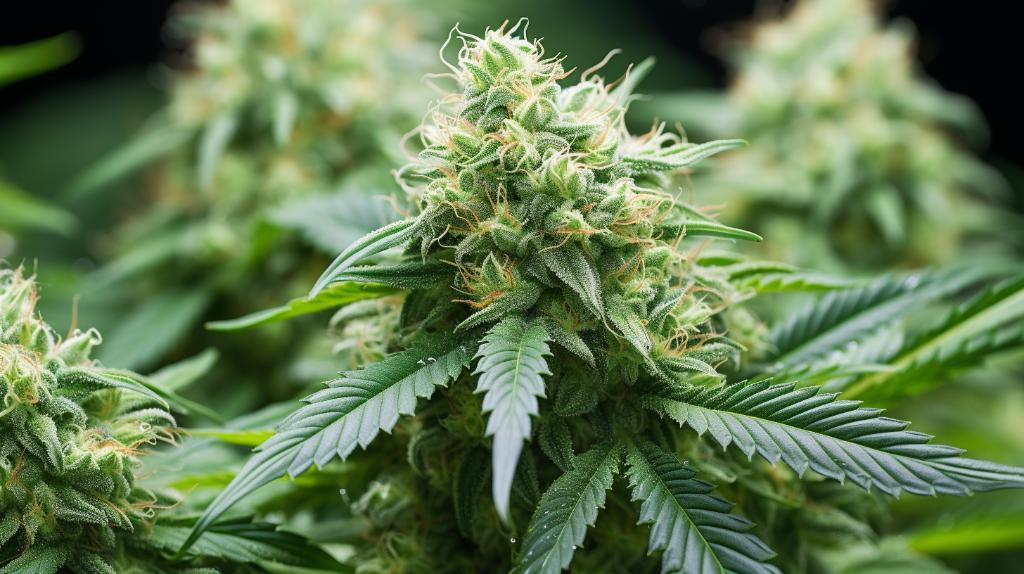
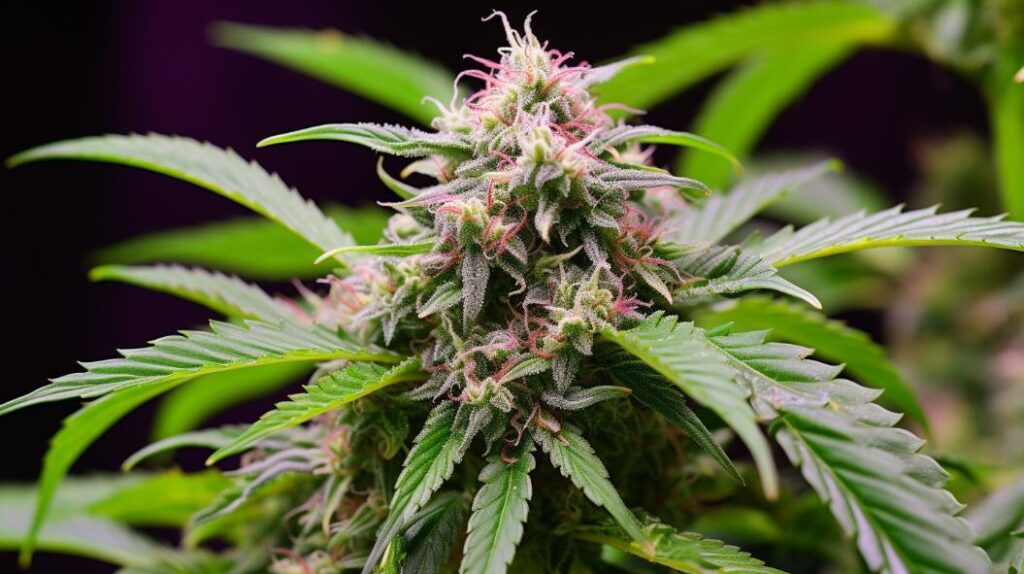
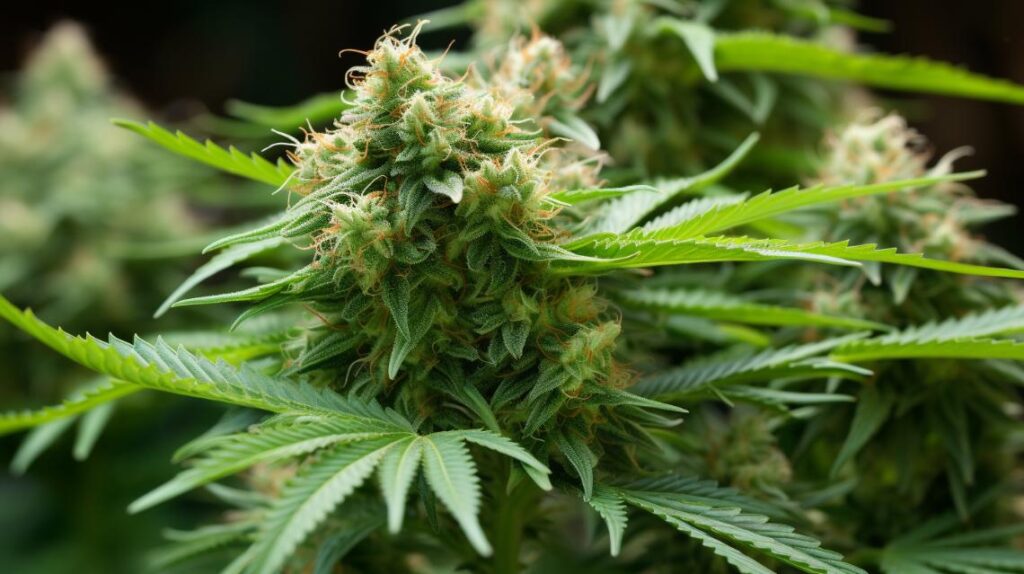
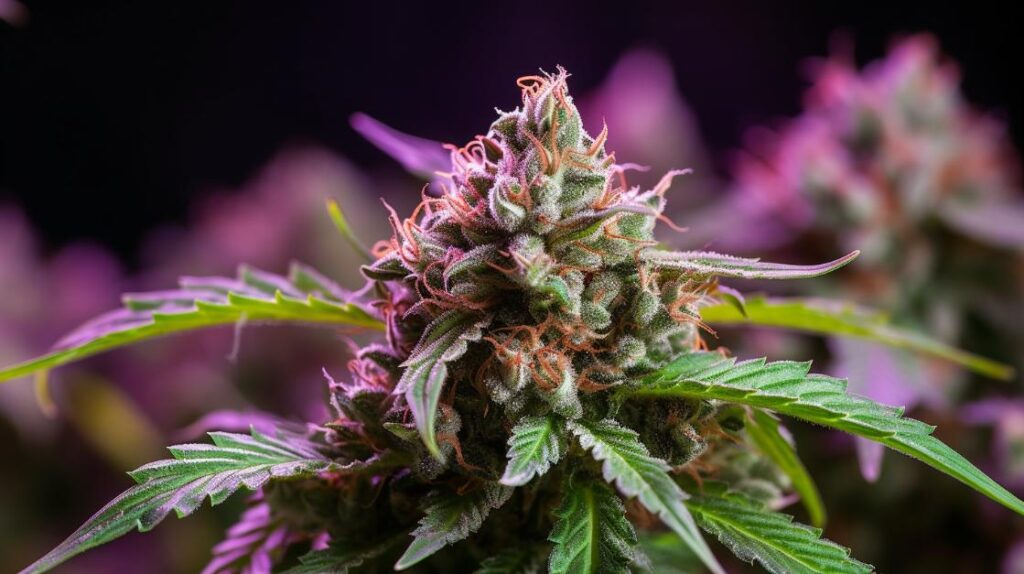
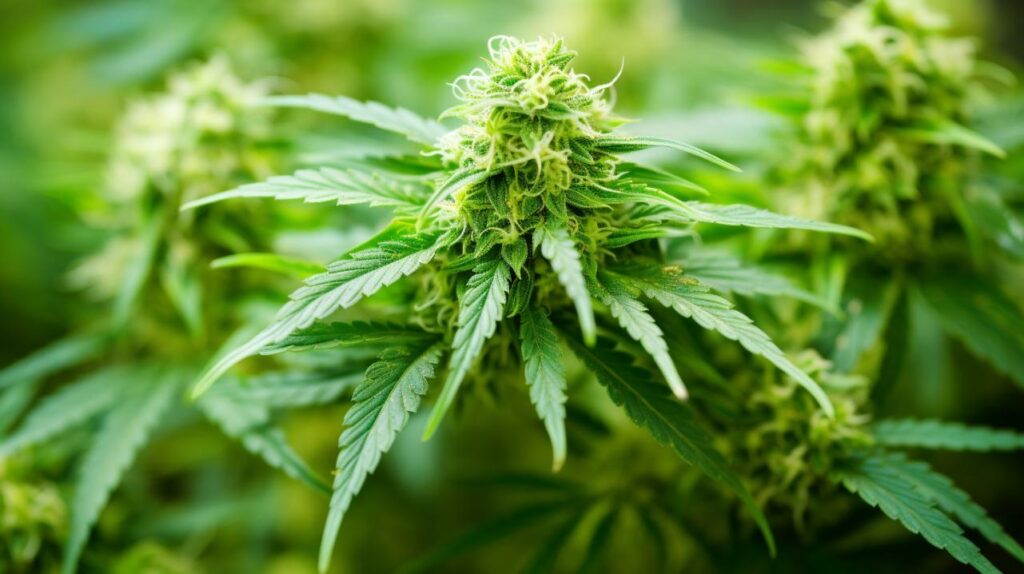

Responses